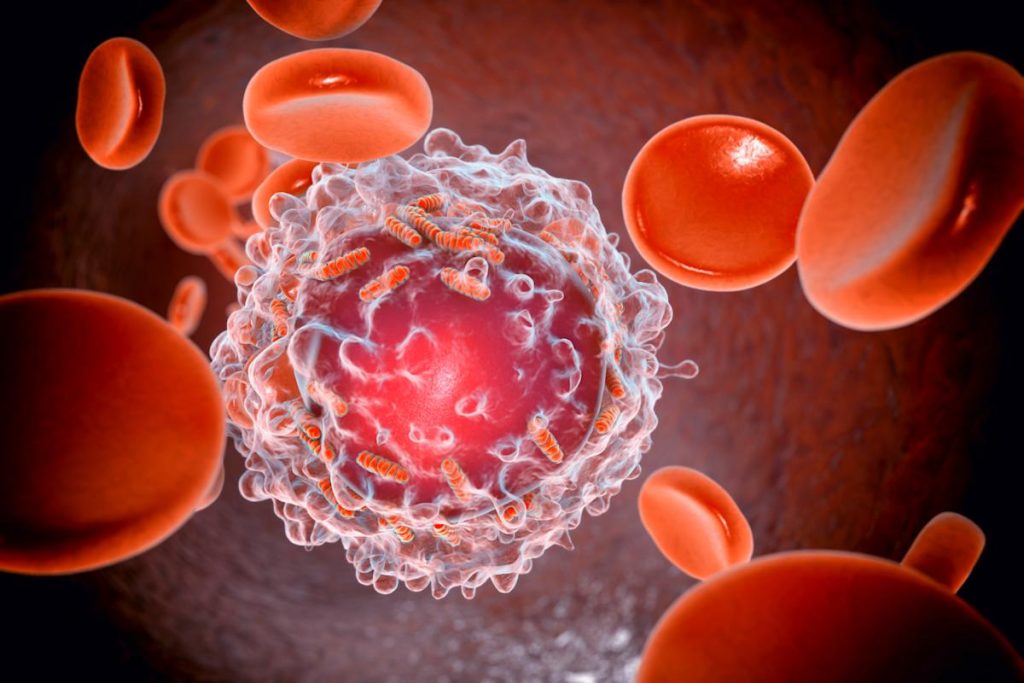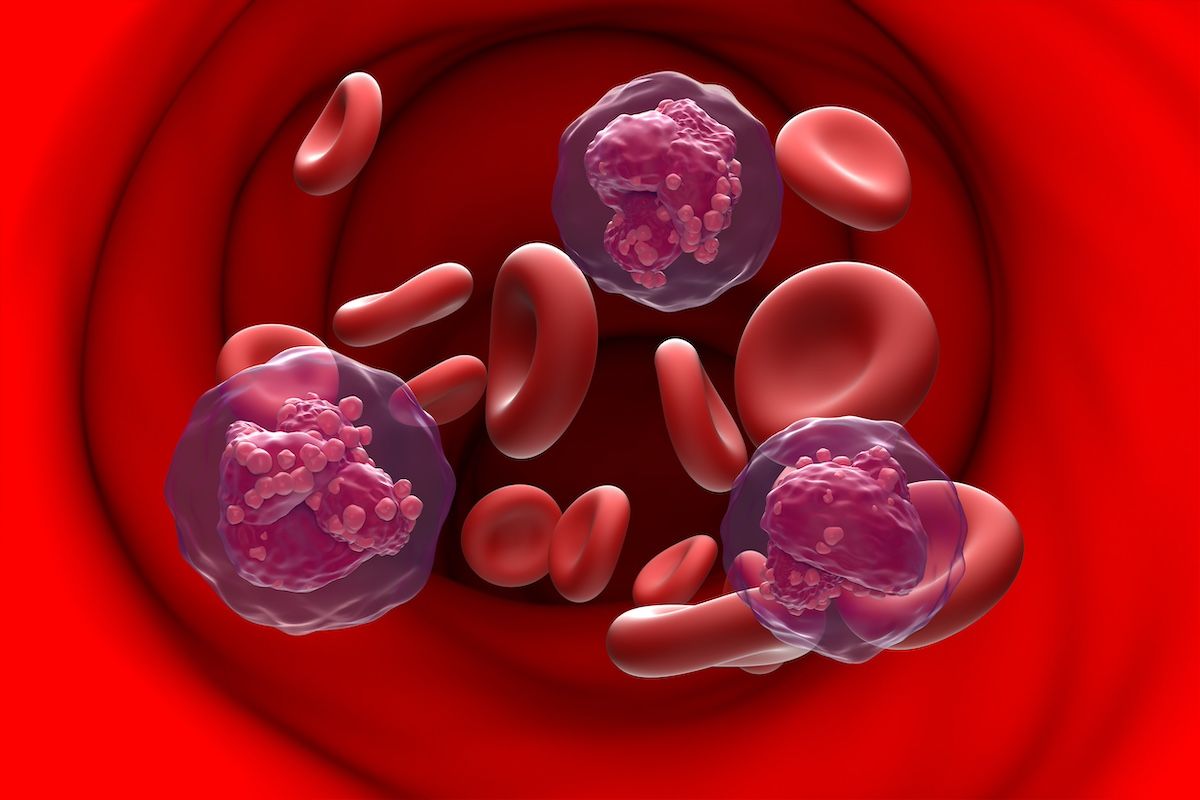
Immune thrombocytopenia (ITP) is a bleeding disorder that often raises concerns about whether it could progress to blood cancers like leukemia. To better understand this, we review the evidence and statistics behind this complex topic.
The exact cause of ITP is linked to immune system dysregulation. While some studies have found a possible association between ITP and leukemia, the actual risk of ITP progress to leukemia is very low.
By exploring the latest research, we aim to provide clarity for patients and families. Understanding the risks and underlying causes of autoimmune thrombocytopenia helps ease worries and supports better long-term care.
ITP is a complex condition where the immune system attacks platelets. Platelets are key for blood clotting. This attack leads to a low platelet count.
ITP is caused by the immune system destroying platelets. This results in a low platelet count. Autoantibodies mark platelets for destruction, mainly in the spleen.

People with ITP often bruise easily and have small red spots on their skin. They also bleed longer from cuts. A CBC shows low platelet counts but normal other blood cell counts.
A bone marrow test may be done to check for other causes. The diagnosis is based on symptoms and lab results.
Treatment for ITP aims to increase platelet counts and reduce bleeding. Corticosteroids and intravenous immunoglobulin (IVIG) are first-line treatments. They help decrease platelet destruction and increase counts.
For those not responding or with severe side effects, thrombopoietin receptor agonists are considered. In some cases, splenectomy is recommended for severe ITP.
We take a personalized approach to treatment. We consider the patient’s health, past treatments, and specific needs.
It’s important to understand how ITP and hematologic malignancies are connected. ITP is mainly seen as an autoimmune disorder. But, it can also be linked to more serious blood diseases.

ITP and hematologic malignancies share similar symptoms. This makes it hard to tell them apart. Symptoms like low platelet count, tiredness, and easy bleeding are common in both.
Diagnostic challenges come from these similarities. A detailed check-up, including bone marrow tests and genetic studies, is needed. This helps to tell ITP apart from malignancies.
There’s a big worry about a 14% misdiagnosis rate of ITP. This can really affect patients. If ITP is not correctly diagnosed, the real problem might not be treated on time. This could make things worse.
It’s key for doctors to be careful and use the right tests. Regular follow-up and checks are vital. They help catch any hidden cancers early.
ITP can sometimes be a sign of a more serious blood cancer. For example, some cancers like CLL can cause ITP-like symptoms. Autoimmune diseases, including ITP, are linked to bad signs in CLL.
Doctors need to be careful and do a full check-up. They should think about the risk of cancer in patients with ITP. This is true for those with ITP that doesn’t respond well to treatment or seem unusual.
We look into whether Immune Thrombocytopenia (ITP) can turn into leukemia. There’s a worry that ITP might become a more serious blood cancer like leukemia. ITP is known for low platelet counts due to the immune system attacking them. The question is, can it turn into leukemia, like acute myeloid leukemia (AML)?
Studies are trying to find out how ITP might turn into leukemia. They think genetic changes and immune system problems might be involved. For example, some research points to clonal hematopoiesis, where stem cells get mutations, as a risk factor for AML.
Key findings include:
Even with these findings, it’s important to note that ITP turning into leukemia is very rare. Most ITP patients don’t get leukemia, and most leukemia cases don’t start with ITP. The risk, though not zero, is quite low.
The rarity of this transformation is highlighted by:
It’s hard to tell if ITP is turning into leukemia or if it was misdiagnosed. Some patients might have had leukemia all along, with low platelets being the first sign. Using advanced tests and careful patient checks is key to making the right diagnosis.
Strategies to improve diagnostic accuracy include:
ITP turning into Acute Myeloid Leukemia (AML) is rare but important. We learn a lot from these cases. They help us understand the risks and how this transformation happens.
A 49-year-old woman at Mansoura University went from ITP to AML in just three months. This shows how fast the disease can change. It also shows how tricky it is to diagnose and treat ITP.
“This case shows we must watch patients with ITP closely,” the researchers said. It’s a key example of the dangers of ITP.
There are more cases like this in medical journals. These rare cases give us important clues about ITP-to-AML. For example, a study found patients with hard-to-treat ITP sometimes got AML.
These cases remind us of the need for ongoing monitoring. They also show how important it is to understand what leads to ITP-to-AML.
Looking at these cases, we see some common themes. Refractory ITP and certain treatments seem to increase the risk. Also, some genetic issues might help ITP turn into AML.
These cases tell us we need a detailed approach to understand ITP-to-AML. More research is needed to figure out how ITP, its treatments, and AML are connected.
When patients with Immune Thrombocytopenia (ITP) don’t get better with usual treatments, it’s a big worry. This could mean there’s something more serious going on. Therapy-resistant ITP might be a red flag for blood cancers, so we need to check closer.
Treatment-refractory ITP doesn’t get better with many treatments. This includes medicines like corticosteroids and immunoglobulins. We’re looking for signs that show these patients are different.
Studies found that these patients often have very low platelet counts. They also might have had their ITP come back many times.
There’s a link between therapy-resistant ITP and blood disorders. Some research points to myelodysplastic syndromes (MDS) or other blood cancers. It’s possible that ITP that doesn’t get better is a sign of something more serious.
For patients with therapy-resistant ITP, we suggest a detailed check-up. This includes looking at their medical history, doing a physical exam, and running tests. Tests like a complete blood count and bone marrow biopsy are important.
By doing these tests, we can find out what’s really going on. This helps us give better care and might find other health issues that need attention.
In short, therapy-resistant ITP is a serious issue that needs quick action. By spotting patterns, understanding the link to blood disorders, and doing thorough tests, we can help these patients. We might even find other health problems that need their own treatment.
Myelodysplastic syndromes (MDS) and clonal hematopoiesis are complex conditions. They often overlap with Immune Thrombocytopenia (ITP). Understanding how these conditions interact is key to better patient care.
MDS/CMML-associated ITP happens when patients with these syndromes also get ITP. This makes managing their condition more challenging. Studies show that ITP in these patients can be different from the usual ITP.
“ITP in MDS/CMML patients shows a more complex bone marrow issue,” a study found. This complexity means we need to do a thorough check-up and tailor treatments.
Interestingly, MDS/CMML patients with ITP might have a lower risk of turning into Acute Myeloid Leukemia (AML). This is a significant finding for monitoring and risk assessment. The exact reasons for this lower risk are not clear yet.
“ITP in MDS patients seems to lower the risk of AML, showing a protective effect or a different biology.”
It’s vital to have good monitoring plans for patients with ITP, MDS/CMML, and AML risk. Regular blood tests, bone marrow checks, and molecular tests are key. A team of experts should manage these patients.
By being proactive and informed, we can improve care for these complex cases. This approach helps in achieving better outcomes.
We’ve looked into how Immune Thrombocytopenia (ITP) might lead to leukemia. The data show that this change is very rare.
The worry is that ITP could turn into leukemia, like acute myeloid leukemia (AML). While some cases have been seen, they are very rare. They often happen in patients with ITP that doesn’t respond to treatment or those with myelodysplastic syndromes.
Knowing about the risk of ITP turning into leukemia is key. It helps set realistic hopes for patients and guides doctors. Even though it’s rare, it shows the need for close monitoring and quick checks in patients with hard-to-treat ITP.
By combining the latest studies and medical knowledge, we can help both patients and doctors. This way, we can improve care and results for those with ITP.
The chance of ITP turning into leukemia is very small. Research shows it’s rare, making it hard to study.
ITP can be linked to blood cancers. Sometimes, it’s a sign of a hidden cancer. So, it’s important to diagnose and watch it closely.
A 14% misdiagnosis rate in ITP patients is alarming. It means many patients might not get the right treatment. This can lead to serious problems, showing the need for an accurate diagnosis.
Yes, an ITP that doesn’t respond to treatment might signal a hidden blood disorder. Spotting this early is key to catching and treating it quickly.
Myelodysplastic syndromes and clonal hematopoiesis can be linked to ITP. Knowing how these conditions affect ITP helps in monitoring and caring for at-risk patients.
Studying cases like the Mansoura University case has revealed common traits in ITP-to-AML transformations. This gives us insights into these rare events.
Doctors can spot high-risk patients by looking for signs of ITP that don’t respond to treatment. They should also check for hidden blood disorders. Using the right diagnostic tools is key to catching problems early.
Immune system imbalance is key in ITP. Understanding this helps in finding better treatments and managing the risk of blood cancers.
Yes, high-risk ITP patients need close monitoring. This includes checking for signs of blood cancers and using specific diagnostic tools to catch problems early.
Subscribe to our e-newsletter to stay informed about the latest innovations in the world of health and exclusive offers!
WhatsApp us